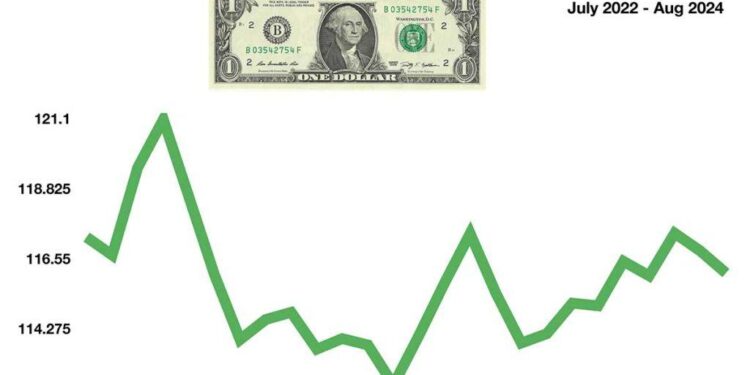“`html
The Global Implications of a Declining U.S. Dollar
As the value of the U.S. dollar experiences notable volatility, its downward trend carries extensive consequences that resonate throughout international markets and economies. Investors, government officials, and consumers are increasingly attentive to the weakening currency, which has become a focal point in financial discussions and media coverage, including prominent publications like The Wall Street Journal. This article explores the ramifications of a depreciating dollar on global trade dynamics, inflationary trends, and overall economic stability. By analyzing various sectors affected by currency depreciation, we aim to present an insightful overview of how a weakened dollar influences both domestic and international economic landscapes.
Effects of Dollar Weakness on Global Trade
The decline in dollar value significantly alters international trade dynamics, affecting both exporters and importers in profound ways. A weaker dollar renders American products more affordable for foreign consumers, potentially leading to an uptick in U.S. exports. This change can enhance revenue streams for American manufacturers, agricultural producers, and service providers catering to overseas markets—ultimately fostering job creation and stimulating domestic economic growth. On the flip side, rising costs for imports may burden consumers and businesses dependent on foreign goods while contributing to broader inflationary trends.
Additionally, shifts in currency strength can disrupt complex supply chains and reshape global economic relationships. Nations with stronger currencies might struggle to maintain competitiveness in price-sensitive markets; this could prompt strategic reassessments regarding trade policies worldwide. Such dynamics may lead countries to consider devaluing their own currencies or entering into new trade agreements aimed at restoring balance within trading relationships.
| Currency Dynamics | Consequences |
|---|---|
| Weaker Dollar |
|
| Stronger Foreign Currencies |
|
Currency Fluctuations: Impact on Inflation Rates & Consumer Pricing
The fluctuations in currency values play a crucial role in determining inflation rates as well as consumer pricing structures; typically resulting from a weaker dollar is an increase in costs associated with imported products. As the value of the dollar diminishes further over time—American households may notice that essential items such as groceries or gasoline become more expensive due to heightened import prices—this surge can diminish purchasing power significantly while forcing families to reevaluate their financial plans.
- Main Influencing Factors:
- Cumulative Import Costs:A declining dollar escalates expenses related to imports.
- Commodity Valuation:A significant portion of global commodities is priced using dollars which affects affordability levels globally.
- User Confidence Levels:An uptick in prices often leads consumers towards reduced spending habits.
This relationship between currency valuation changes alongside inflation rates creates complexities influenced by broader global economic conditions as well; nations boasting strong currencies might enjoy lower import costs enhancing their competitive edge internationally while certain sectors within America reliant upon exports could benefit from favorable pricing abroad due solely because they have become more appealing options overseas amidst these fluctuations.
A comparative analysis reveals:
| Categorization Aspect | Dollar Weakness Effects | Dollar Strength Effects |
|---|---|---|































